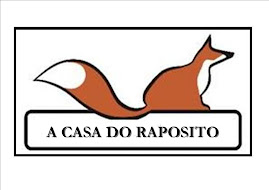 (The photo is taken from the annual Festival of the Moros y Cristianos in Benamahoma, a village in Cadiz province which I love well and retreat to whenever I can. Pilgrimage to Heresy was edited there.)
(The photo is taken from the annual Festival of the Moros y Cristianos in Benamahoma, a village in Cadiz province which I love well and retreat to whenever I can. Pilgrimage to Heresy was edited there.)In December of 1107 a council was convened in Leon. Urraca was confirmed as "Countess of Galicia" in her husband's place. Her father, Alfonso the king was still around but was bedridden and perhaps mentally impaired as well as physically incapacitated. This provided an excellent opportunity for the nobles with influence to exercise just that. Perhaps they reckoned without Urraca's strength (or should I say "womanly wiles?"), but I am getting ahead of myself.
Be that as it may, in the summer of 1108, events were about to endure a tragic turn of fate.
All hell broke loose on the frontier between the kingdoms and the increasing determination of the Moorish Almovarides. The Castillian army was despatched toute de suite to deal with this insurrection with the young Sancho - who was only 15 - at the head. And now the language must take a distinctly medieval turn because Sancho was "dealt a mortal blow".
Alfonso the king was devasted. The light of his aged eyes had been extinguished, perhaps because of a royal decision taken with overconfidence. The ailing king withdrew completely at a time when his kingdom had never needed him more. Clearly some decision had to be taken.
Duke Raimundo (whom Alfonso VI trusted) was dead. His cousin Henry (whom he did not and had reason not to) was married to Teresa, Urraca's illegitimate sister and both lorded it in Portugal. Between them they were a force of power and sedition to be reckoned with. Henry was treacherous. It seems that everyone in medieval times had their own agenda, and Henry and Teresa were no exception. Far from it.
Urraca the true heir (as we would see it today) was a woman, and well, no more need be said about that!
The Almoravides were pressing the frontier big time. The kingdom of Leon-Castilla needed a leader: a man of proven strength, military experience, and strategic capacity.
If the resumes were appearing on the desks of the royal counsellors, Alfonso I, the King of Aragon, called "El Batellador" must have swept all rival claimants into the wastebasket.
He was 36, never married (which in itself was unusual). Established as undisputed ruler of the kingdom of Aragon. He had a great reputation as a soldier and didn't seem to have a lot of time for women. There did not appear to be any illegitimate children scattered around Aragon. (I am tempted to come to a few conclusions here, especially in light of what follows, but I won't.)
Unfortunately, despite his immaculate CV, Alfonso the Battler wasn't well liked by the nobles of Leon, and especially Castilla.
Galicia, no doubt - and perhaps its bishop, Diego Gelmirez - trembled in its 12th century boots.
.
P.S. Comments also taking unexpected turns - of phrase in this case. I am wondering whether they are evidence of alien contact. Do see...








